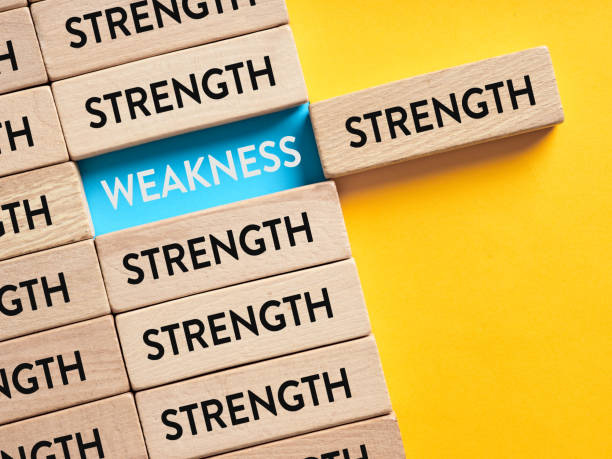
Instead of getting lulled into complacency or blindly thinking that they have hit their ceiling, people should stay hungry for knowledge as they seek different ways and avenues where they can improve with each passing day. This is especially true for UPLB employees because they should always bear the golden standard of honor and excellence in everything that they do because their actions in and out of the University reflect back to the academe one way or another (Preston et al., 2019; Waldman et al., 2017).
But more often than not, negative thoughts, uncertainty, insecurity, and lack of confidence can cast a dark shadow and act as shackles that prevent people from pushing forward and climbing zealously towards the pinnacle of success and self-actualization (Neff et al., 2018; Stajkovic & Luthans, 1998). The key to unlocking all of these aspirations and so much more is boosting one’s self-esteem and confidence so that they can tap into their inner strength and abilities, realize the fullest of their potentials, and slowly transform into the best versions of themselves (Bandura, 1997; Rosenberg, 1965).
With that in mind, here are some effective strategies and tested techniques for people to build their confidence and shed the shadows of doubt that are pulling them back. In no time at all, they will walk with more swagger and stand taller, not with arrogance, but with pride because they know that they have what it takes to reach all of their goals and dreams in life (Wood et al., 2014; Zimmerman, 2000).
Grit, Grind and Gains
Due to body dysmorphic disorder, some people hyperfixate on their physical appearance, and since they tend to focus on the perceived negative aspects of their looks, they find themselves with low self-esteem and substandard body image. They can crush these adverse connotations by eating a balanced and healthy diet, exercising regularly, and breaking bad habits that will make their body and mind stronger than ever (Cash, 2004; Cash & Pruzinsky, 2002). Playing sports and engaging in outdoor activities so that they can get some sun and fresh air is also a great way to stay strong and in great shape to take on the different challenges that they encounter every day in their professional and personal lives (Barton et al., 2012; Coon et al., 2016).
Go with the Pro
Aside from reading critically acclaimed books from the self-help section and staying up late browsing through the internet for motivational quotes, videos, and articles, UPLB employees can also invest in themselves by enrolling in programs offered by John Robert Powers and other such companies. These companies have an impressive stable of highly-trained resource speakers and subject matter experts that can guide them accordingly so that clients can slowly turn their weaknesses into strengths (Gonzalez & Griffin, 2015; Robbins, 2017). And as for those who are fighting silent wars and dealing with past traumatic experiences that trigger episodes of self-doubt and dark depression, they can seek counseling and guidance from licensed therapists and psychiatrists who will help them confront and resolve these personal issues in a safe, secure, and nurturing environment (American Psychiatric Association, 2013; Beck, 2011).
Get Off the Bench and Grab a Coach
If enrolling in expensive courses and programs from private organizations and companies is simply out of the question because of financial constraints and conflicts in the schedule, employees can still seek help and assistance from their managers and supervisors. Competent and effective leaders have the unwritten responsibility and inherent ability to motivate, mentor, and coach their employees to bring out the best in them and make them more competent in the positions that they hold for the University (Blanchard & Johnson, 2019; Yukl, 2013). Adhering to approved staff development plans, following the strategic performance management system closely, and subscribing to the available learning and development interventions available and applicable to them will surely help both supervisors and employees grow and mature together into more well-rounded individuals for the greater good of their units and the University as a whole (Baldoni, 2016; DeNisi & Murphy, 2017).
Celebrate Small Wins and Curb Unnecessary Conflicts
Finally, to truly sustain their newfound confidence and boost their self-esteem, people should not be too hard on themselves as they celebrate small wins that give them a sense of accomplishment and gratification for a job well-done (Fisher, 2014; Harter, 2017). It might be inconsequential or mundane for some people at first glance, but these small wins can help them gain momentum and generate the energy that they need to accomplish their bigger goals and dreams in life (Oettingen, 2014; Seginer, 2009). On the flip side of the coin, as they allow themselves to be happy, content, and secure, they should also avoid energy vampires that drain the life out of them. They should refrain from dwelling in toxic relationships and environments as they stay away from people who negatively affect their self-image and constantly bring them down with insensitive comments, backhanded compliments, passive-aggressive remarks, and rude actions that make them question their self-worth (Hogan et al., 2011; McCroskey & Richmond, 2014).
Christian Jonah P. Mizal
References
American Psychiatric Association. (2013). Diagnostic and statistical manual of mental disorders (5th ed.). American Psychiatric Publishing.
Bandura, A. (1997). Self-efficacy: The exercise of control. W.H. Freeman.
Beck, A. T. (2011). Cognitive therapy: Basics and beyond. Guilford Press.
Baldoni, J. (2016). The leadership gap: What gets between you and your greatness. Portfolio.
Barton, J., Griffin, M., & Pretty, J. (2012). Exercise-, nature- and socially interactive-based initiatives improve mood and self-esteem in the clinical population. Perspectives in Public Health, 132(2), 89-96.
Blanchard, K., & Johnson, S. (2019). The one minute manager. HarperCollins.
Cash, T. F. (2004). Body image: Past, present, and future. Body Image, 1(1), 1-5.
Cash, T. F., & Pruzinsky, T. (Eds.). (2002). Body image: A handbook of theory, research, and clinical practice. Guilford Press.
Coon, J. T., Boddy, K., Stein, K., Whear, R., Barton, J., & Depledge, M. H. (2016). Does participating in physical activity in outdoor natural environments have a greater effect on physical and mental wellbeing than physical activity indoors? A systematic review. Environmental Science & Technology, 45(5), 1761-1772.
DeNisi, A. S., & Murphy, K. R. (2017). Performance appraisal and performance management: 100 years of progress? Journal of Applied Psychology, 102(3), 421-433.
Fisher, R. (2014). Getting to yes: Negotiating agreement without giving in. Penguin Books.
Gonzalez, A., & Griffin, D. (2015). The coaching habit: Say less, ask more & change the way you lead forever. Box of Crayons Press.
Harter, J. K. (2017). The power of small wins. Harvard Business Review Press.
Hogan, A. J., Stubbs, T. L., & Buschor, C. J. (2011). Inferring status and competence from social comparison: Meta-analyses on selection for team entry and team performance. Journal of Applied Psychology, 96(3), 519-534.
McCroskey, J. C., & Richmond, V. P. (2014). Nonverbal behavior in interpersonal relations. Routledge.
Neff, K. D., Hsieh, Y. P., & Dejitterat, K. (2018). Self-compassion, achievement goals, and coping with academic failure. Self and Identity, 17(4), 420-438.
Oettingen, G. (2014). Rethinking positive thinking: Inside the new science of motivation. Current.
Preston, S. D., Hofelich Mohr, A., & Jensen, T. (2019). The psychology of honor. Annual Review of Psychology, 70, 499-529.
Rosenberg, M. (1965). Society and the adolescent self-image. Princeton University Press.
Robbins, A. (2017). Awaken the giant within: How to take immediate control of your mental, emotional, physical, and financial destiny! Simon & Schuster.
Seginer, R. (2009). Future orientation in times of threat and challenge: How resilient adolescents construct their future. International Journal of Behavioral Development, 33(2), 97-103.
Stajkovic, A. D., & Luthans, F. (1998). Self-efficacy and work-related performance: A meta-analysis. Psychological Bulletin, 124(2), 240-261.
Waldman, D. A., Siegel, D. S., & Javidan, M. (2017). Components of CEO transformational leadership and corporate social responsibility. Journal of Management Studies, 54(2), 155-190.
Wood, J. V., Heimpel, S. A., & Michela, J. L. (2014). Savoring versus dampening: Self-esteem differences in regulating positive affect. Journal of Personality and Social Psychology, 92(4), 725-738.
Yukl, G. A. (2013). Leadership in organizations (8th ed.). Pearson.
Zimmerman, B. J. (2000). Self-efficacy: An essential motive to learn. Contemporary Educational Psychology, 25(1), 82-91.

